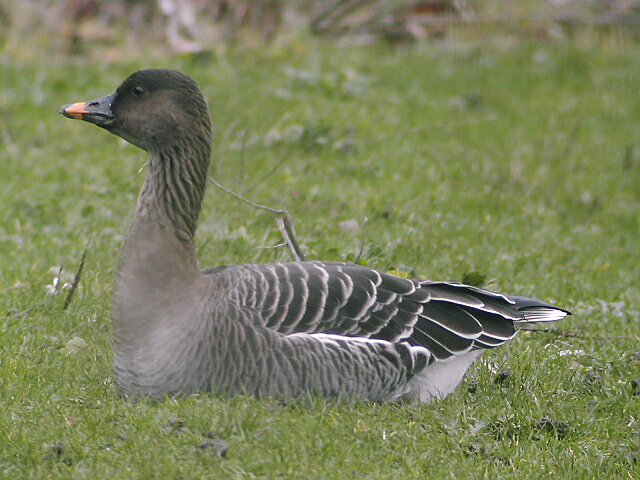 |
A single stab-mark; not the type of injury expected from crude
unhooking techniques by inexperienced pike
anglers or recent spawning activity. |
As I keep harping on about; this world revolves around the individuals right to an opinion, however different from the one you hold - so how's this for starters? Cormorants - successful colonists or vermin? Before you make your decision - what if I'd asked Mink/Grey Squirrels/Edible Dormice/Wel's Catfish, etc, etc..? I make this statement due to recent events, whilst pike fishing, on The Royal Military Canal. If you have spent any time following my blog, you will have spotted that Benno (my son) is absolutely caning me at this venue, he's caught 9 doubles to my 2! We make it a part of our ritual that we photograph both sides of any pike, we capture, as this allows for individual id to be made and recaptures spotted. As a direct result of these efforts we have picked up on a worrying trend - the fresh scars that are apparent on our pike.
 |
| That's some tooth-pick! Is it the same weapon that is inflicting these puncture scars on the RMC pike? |
I have eluded to the problems that inexperienced anglers have in the condition that pike are returned to the water - my time on the East Kent drain (last winter) was to see some disturbing signs of human maltreatment of these magnificent fish. I also reported the other side to this problem - vast amounts of debris left behind after these anti-social goons had gone home. On the Royal Military Canal, apart from one very popular section, we have seen no other anglers (pike or otherwise) apart from the regular guys we fish with. These pike are not being subjected to any sort of continuous pressure from anglers. However, they live in a fishery where there is angling pressure during every daylight hour - Cormorants in their 100's are supplementing their diets by working the RMC.
 |
An adult "sinensis" Cormorant - a southern race which specialises in freshwater habitats
That they are now breeding in the UK - a direct result of climate change? |
When I started chasing big fish; way back in the mid-70's, seeing a Cormorant on an inland water was a "red-letter day" yet before I moved to Kent the bailiff at Tring (Bernard Double) was waging war on these fish snatchers - he used a .22 rifle very successfully; as he did with the Mink! (Don't bother contacting the RSPB bird crime unit - he's long gone and the reservoirs are owned by the Rothschild family - and I didn't see anything! - so it's just hear-say)
 |
Red T/O is from a massive inland colony in Holland and
helps explain the current trend for Cormorants to
use Kent freshwater sites in preference to their
marine habitat. (I took this photo in Ramsgate Harbour) |
The Royal Military Canal can hardly be described as an inland water - the Seabrook end would allow a decent match angler to cast a 2AA Waggler onto the beach! (Where's Roy Marlow when you need him - God rest his soul!)
 |
I can offer no other explanation for the scarring on this fish - Cormorants are the most likely culprits
- I was unable to recruit a CSI team! |
Cormorants don't actually target these fish, I feel that they are a result of a feeding response triggered by movement - the cormorants stabbing at the fish, not knowing what size the prey item is in the muddy water of the RMC. Don't take my word for it - just look at the IRIS files on Birdguides to see the size of the prey species that Cormorants will, on occasion, tackle (and have been photographed doing so)
I think my point is that if you are a birder, then you'll see this colonisation as a positive, our resident population of Greater Cormorant -
P.c.carbo being forced further north by the encroachment of these southern invaders -
P.c.sinensis
A farmer doesn't need permission to shoot a fox that is attacking his sheep. so why should a fishery owner require special licences to be able to protect his livelihood when Cormorants are involved?
I don't want all out war on Cormorants, just the right of a fishery owner to protect his investment against these birds - much the same as the farmers are now able to protect their orchards against the damage inflicted by the Rose-ringed Parakeets (didn't hear too many arguments against this legislation!)


















































